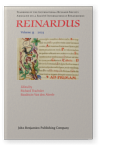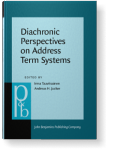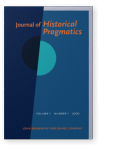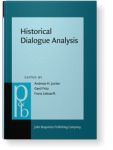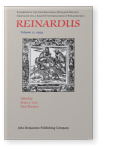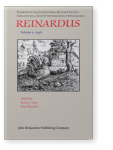Thomas Honegger
List of John Benjamins publications for which Thomas Honegger plays a role.
Yearbook
2006 ‘Wouldst thou withdraw love’s faithful vow?’: The negotiation of love in the Orchard Scene (Romeo and Juliet Act II) Journal of Historical Pragmatics 7:1, pp. 73–88 | Article
The joint sonnet of the two lovers-to-be at the Capulet feast towards the end of the first act is rightly regarded as the dramatic and poetic climax of the first part of the play. Yet it constitutes, from an interactional point of view, merely a first move and the declarations of love proper occur… read more
2003 4. “And if ye wol nat so, my lady sweete, thanne preye I thee, [...].”: Forms of address in Chaucer's Knight's Tale Diachronic Perspectives on Address Term Systems, Taavitsainen, Irma and Andreas H. Jucker (eds.), pp. 61–84 | Article
2002 ‘Curteisi’ in Dame Sirith Reinardus: Yearbook of the International Reynard Society, Levy, Brian J. and Paul Wackers (eds.), pp. 71–86 | Article
2000 ‘But-þat þou louye me, Sertes y dye fore loue of þe’: Towards a typology of opening moves in Courtly Amorous Interaction Journal of Historical Pragmatics 1:1, pp. 117–150 | Article
In this paper, I look at how medieval and early modern poets present and exploit the potential inherent in opening moves in (love) relationships for the purpose of plot motivation and protagonist characterisation. The depiction of the opening moves depends on three interrelated pairs of variables:… read more
1999 On the Fringes of Interaction: The Dawn-Song as a “Linguistic Routine” of Parting Historical Dialogue Analysis, Jucker, Andreas H., Gerd Fritz and Franz Lebsanft (eds.), pp. 189–214 | Article
1999 The Legacy of the Bestiaries in Chaucer and Henryson Reinardus: Yearbook of the International Reynard Society, Levy, Brian J. and Paul Wackers (eds.), pp. 45–65 | Article
Abstract The influence of bestiaries on Chaucer and Henryson is not an obvious one. Thus, Chaucer avoids explicit allegorizations and merely hints at the allegorical dimension of his animals. Yet, he makes use of the ready symbolism of (bestiary) animals in his similes and characterizations of… read more
1996 'A Fox is a Fox is a Fox... ' The Fox and the Wolf Reconsidered Reinardus: Yearbook of the International Reynard Society, Levy, Brian J. and Paul Wackers (eds.), pp. 59–74 | Article
Abstract The Middle English The Fox and the Wolf is the first piece of evidence that 'Renart' had crossed the 'linguistic channel' which separated the Anglo-Norman nobility from their English subjects. The article argues that the poet tries to take into account his audience's likely unfamiliarity… read more
